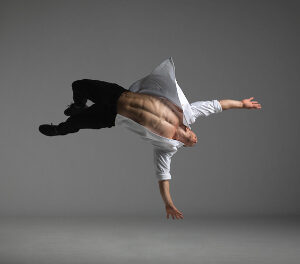I have always admired Whitley Auditorium on the Elon University campus, after attending many concerts in the charming venue. The focal points for anyone entering the hall now are the organ and its pipes, prominently displayed in the front. Until February 3, I had not had an opportunity to hear the Casavant organ, dedicated in 2001; this concert featured Marilyn Keiser, who played for the organ’s dedication, along with two members of the North Carolina Symphony – Anita Burroughs-Price, Principal Harp, and Mary Boone, Assistant Principal Flute. Keiser is currently Chancellor’s Professor of Music at Indiana University, where she teaches courses in sacred music and applied organ. In addition to her worldwide reputation, she has strong ties to North Carolina, having lived in Asheville for many years.
I don’t recall having heard a recital with such a combination of instruments, so I was intrigued by the prospect of this orchestration, and, obviously, many other people were, too, since the cozy hall was nearly filled to capacity. Before the music began, there was an interesting introduction by a member of the concert series committee, who later served as the guest organist’s page turner. During the past few years, Keiser has undergone several injuries that affected her playing, including a rotator cuff tear and various neck problems. Since she was going to be wearing a soft neck brace throughout the performance, an explanation seemed to be in order.
The organ console, which is not normally in view, was positioned on the right side of the stage. This non-centered placement seemed to suggest that the organ was not the centerpiece of this performance and the other two players were of equal importance.
The program began with the Birthday Boy, Felix Mendelssohn (b. February 3, 1809), who, having spent only 38 years on this earth, is one of many great composers who had appallingly short lives. His Sonata in A Major, Op. 65, No. 3, is a mature work that has all the characteristics of the style and language that one immediately recognizes as Mendelssohn. Keiser displayed great control, especially in a long accelerando passage that required just the right changes in velocity to be effective. Many members of the audience were able to see her renowned pedal technique, which still strikes me as astonishing. As a string player it seems enough to have to worry about two arms and hands, let alone thinking about your feet! Since the console is movable, it would have been nice to have positioned the organ so that the audience could see the keyboards and watch her hands, too.
Since this concert featured flute and harp, you just knew that Mozart’s Flute and Harp Concerto was obliged to make an appearance. It took a few minutes to warm up to the organ reduction of the orchestral parts, but since this is a concerto I paid more attention to the two soloists. I must confess that this performance changed my opinion of the work. I had never really warmed to it, but hearing and seeing it performed helped cast new light on it. Burroughs-Price seemed to breeze through the many virtuosic passages effortlessly. Boone has a beautiful, round, glassy tone that exudes warmth and perfection. The phrasing and timing among the three players were marvels to watch and hear.
Dan Locklair, Wake Forest University’s composer-in-residence, was in the audience to hear two movements from his Windows of Comfort , for solo organ. These are slow-moving, ethereal works that only an organist – like Lockair – can effectively compose. There was then a lively rendition of his “Phoenix Processional,” which would serve nicely as an academic or even wedding processional.
Burroughs-Price returned to play “Aria in Classic Style,” for harp and organ by, Marcel Grandjany. This was the highlight of the evening for me as the harp got its chance to shine via one of the great composers for the instrument. In this lyrical, romantic work, the two instruments complimented each other in a heartfelt performance.
Anyone who has a clock that strikes the “Westminster Chimes” tune on the hour would recognize the basis for the final work on the program – “Carillon de Westminster,” by Louis Vierne. The familiar and simple tune, while always there in some form, is taken through an astounding series of variations and permutations that display all the capabilities and sounds of the instrument, and it provided a rousing finish to a delightful evening. Elon University again graciously hosted a lovely reception for everyone, with the artists in attendance.
Keiser performs again in NC on February 29, in Brevard. See our Western calendar for details.











